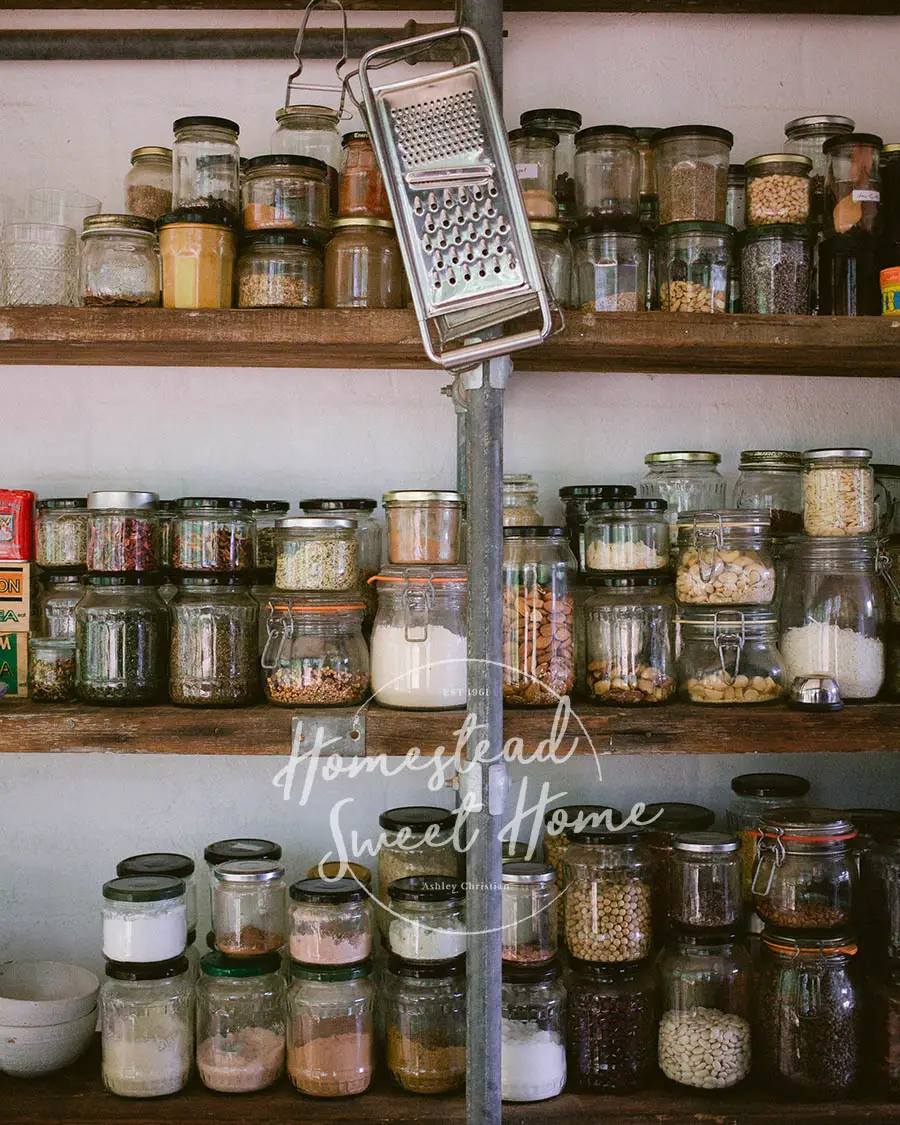3 Month Food Preparedness List

Between global food shortages, supply chain constraints, inflation, unpredictable weather events, fragile power grids, and even toilet paper shortages, you never know what’s around the corner! We can be prepared for these things without being consumed by anxiety or fear. It’s not fear to store up three months of food with this food preparedness list, that is wisdom! A simple look at human history will tell us that our world is fragile and we can learn lessons from that by taking steps now to provide for ourselves and our loved ones in an emergency. Preparedness is a huge topic that can be very overwhelming, so I like to just start with the basics with a 3 months food supply for each member in your house. You may be able to purchase and collect these items right away, or it may take you a long time to save up—either way is okay! This is a journey the point is not to be 1000% prepared for any and all situations tomorrow, but rather to take one baby step at a time. Any action you take is good.
The Three Layers of Food Preparedness
When talking about preparing food for the future, we like to look at three layers. Most families have about two weeks of food in their pantries at any given time. Maybe not every single one of your family’s favorites for two weeks, but enough food to sustain you. This is your working layer. The things you are cooking from and replacing from the store right now. The next layer is your short-term storage layer. This food is shelf-stable for at least 6-12 months and will make up your 3-month food preparedness list.
The long-term storage layer is there in case the world really falls apart, or in prepper speak, when SHTF (shit hits the fan.) These are made up of some foods that when stored properly can last up to 30 years. My grandpa has wheat berries stored in drums for this purpose. Though we hope this never happens in our lifetime, we have already seen millions starve in global wars in the last 20 years. And we can leave a legacy of preparedness for our children and our children’s children.
The good news about the three layers of food prepping, is that most of us already have our 2-week working layer down. So next we will tackle the second layer with our 3-month food preparedness list. And remember, just start with what you have. Many of us struggling with economic realities and will need to take the process slowly. Remember that’s okay, as long as we are making progress, that’s what matters.
You may also be surprised how affordable buying scratch foods in bulk is. It’s much less expensive than our regular grocery bills. Another consideration is where to store all this extra food. It can take up quite a lot of space and is best stored inside your climate-controlled home or in a basement or cellar. You’ll need to think through the places in your home where you can store this food—closets, under beds, under stairs, under the sink, or even fill up empty suitcases. There is something incredibly freeing about clearing out the unneeded junk cluttering up our homes, and replacing it with something as life-sustaining as food. You may even be able to sell some of that junk to help you purchase items from your 3-month food preparedness list.
Quantities of Food Per Person
Having a bunch of teenage boys in the house, we go through a lot of food! You will want to make sure to have the right quantities of the right foods for each member of your family.
3-Month quantities per person for adults and children over 12:
- 100 pounds of grain
- 15 pounds of legumes
- 8 pounds of dairy
- 16 pounds of sugar
- 2 pounds of salt
- 8 pounds of fat
- Assorted spices and herbs
You’ll notice this list doesn’t include any fruits or vegetables, and you’ll also need to secure a source of water, but that is a post for another time. You can and should absolutely add fruits and vegetables to this list, but this covers the basic macro-nutrients you will need to sustain life for 3-months. If you have teenagers (especially boys), or have members of your household with a higher body mass index, you’ll want to add 20% to these quantities. For children under 12, you’ll need to decrease these quantities depending on their size and typical eating habits compared to the average adult.
Grains
Grains will give you and your family an excellent source of energy from complex carbohydrates, fiber, and vitamins. They can be easily cooked with your legumes, dairy, fat, and spices to make wholesome, nourishing meals for you and your family. I recommend you choose grains that you and your family like to eat. Once you’ve reached your desired short-term preparedness quantities, you can rotate the oldest stored grains into your working pantry layer so all your stored food stays good and doesn’t spoil.
- Oats
- Rice
- Barley
- Cornmeal
- Popcorn
- Flour
- Pasta
Legumes
Legumes include beans, nuts, and lentils and provide a good source of protein that is not only inexpensive to purchase, but also very easy to store in the short and long-term layers. Again when you are deciding what legumes to store, chose those that you and your family would eat anyway. That way you can rotate through to your working panty and keep your short-term stores fresh. Some good choices for short-term legume storage include:
- Lentils
- Chickpeas
- Pinto Beans
- Green Peas
- Black Beans
- Kidney Beans
Dairy & Eggs
Dairy and eggs are an important addition because when paired with legumes, will supply a complete source of proteins that can’t be found in an all plant-based diet. Dairy and eggs are also full of healthy fats, vitamins, and minerals, and will give you much-needed variety to your diet in case of an emergency.
- Powdered Milk
- Powdered Cheese
- Powdered Eggs
Fats
Fats are essential for not only brain functioning and developing bodies, but also add flavor and are essential for many dishes. I recommend not using vegetable oils which can go rancid very quickly and are incredibly unhealthy for you. Here are some good options to choose from.
- Peanutbutter
- Refined Coconut Oil
- Frozen Butter
- Frozen Olive Oil
- Lard
- Tallow
Salt, Sugar, and Spices
Even though I don’t personally consume sugar and my family is very limited, for the average person, you will want 15 pounds of sugar for 3 months. In an emergency situation is not the time to try to change your diet drastically. Likely these changes to your foods will be drastic enough without removing sugar. Depending on your current consumption of sugar, most people go through an unpleasant sugar detox process with flu-like symptoms over several days up to a few weeks. It’s vital you keep your current habits in mind when preparing. In addition to sugar and salt, consider adding these spices for flavor.
- Pepper
- Chili Flakes
- Oregano
- Basil
- Cummin
- Curry Powder
- Onion Powder
- Garlic Powder
Canned and Dried Goods
Now that you’ve covered your macronutrient basics, it’s time to add some canned or dried meat, vegetables, and fruit for variety and vitamins and minerals. Here are some ideas to add to your list:
- Instant Potatoes
- Applesauce
- Jelly
- Beef Jerky
- Canned Tuna
- Nuts
- Dried fruit
- Canned tomatoes
- Salsa
- Canned Veggies
- Cocoa Powder
I know this seems overwhelming but I know you can do it! And though our peace ultimately comes from our maker, there is absolutely an extra layer of comfort knowing we can provide basic needs for our families. Scary news stories hit differently when you are prepared. Share this list with your extended family and neighbors too so they can be prepared rather than knocking on your door! And while you’re working on your 3-month food preparedness list, consider starting a container garden and raising some chickens.
Are there any other food items you would add to this list? Share your ideas in the comments below.

One Comment
Great article!